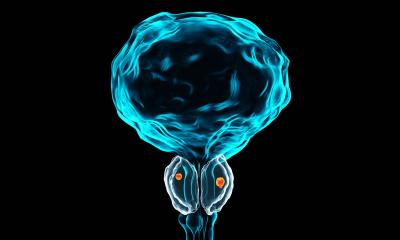Medication
Molecules most capable of fighting prostate cancer
Scientists from MIPT (Moscow Institute of Physics and Technology), MSU (Moscow State University), and National University of Science and Technology "MISIS" provided an overview of the most promising compounds which can be used as medications for prostate cancer. The article was published in the Journal of Drug Targeting.

A team of researchers provided an overview of molecules capable of assisting in the fight against prostate cancer and in the diagnosis of this illness. Also authors compiled a list of the most promising compounds.
Researchers have identified 11 compounds of great promise. All these substances are currently tested in clinical trials. In other words, at the stage of preclinical studies they demonstrated the necessary qualities.
Prostate cancer is one of the most common cancers in men. Today, the majority of anti-cancer therapies are not selective enough and may have a detrimental effect not only on cancer cells, but on the healthy cells of the body as well. That is why it is so important to develop such drugs that would attack the cancer cells exclusively, which will increase the effectiveness of treatment and reduce the negative impact of therapy on the body as a whole. However, to ensure the drug selectivity, the scientists need some object which is present only in cancer cells - and not anywhere else: a cancer marker.
The well-known marker for prostate cancer is PSA (prostate specific antigen), which is already used in medicine for the diagnosis of prostate cancer. However, for a number of reasons, PSA is considered as an insufficiently precise target. A promising alternative for the diagnosis and treatment of prostate cancer is PSMA (prostate specific membrane antigen). In the case of cancer, prostate tissues contain almost 10 times as many of these markers as healthy tissues of the prostate gland. Also, diagnosis by means of this marker can detect the tiniest metastases (secondary distant tumors).
"PSMA is one of the most promising biological targets for the development of new hybrids of selective PSMA ligands with antitumor medicinal substances or molecular diagnostic tools for their targeted delivery to the site of the disease - particularly in the case of prostate cancer,"says Yan Andreevich Ivanenkov, Ph.D (biology), Head of the Laboratory of Medical Chemistry and Bioinformatics, a lecturer in MIPT.
Biocatalyst and target
PSMA, known in English language literature as a prostate specific membrane antigen, catalyzes the hydrolysis of N-acetylaspartylglutamate into N-acetylaspartate and glutamate. This precise PSMA function was taken into account in order to compile a list of the most promising substances, which form the basis of drugs used for the treatment of prostate cancer.
Hydrolysis is the chemical breakdown of a compound of organic molecules into other compounds: for example, during hydrolysis of proteins, the latter are split into amino acids.
As the authors of the review article state, all molecules capable of binding to PSMA can be divided into three groups: antibodies, aptamers, and ligands.
Antibodies are proteins synthesized by the immune system. Aptamers are peptide molecules or fragments of DNA/RNA, capable of selectively binding to specific target molecules. Ligands are substances of a rather arbitrary nature which interact with the biocatalist, whereby, as a rule, we are talking about direct interaction with its active center: exactly with that part of the molecule which allows it to perform its main function.
Comparing all three groups, the researchers concluded that ligands are the most promising group. Ligands, in our case, are molecules the size and weight of which are most suitable for synthesizing. Besides, they also have good pharmacokinetic parameters.
Pharmacokinetics: This is a science of transformation of chemical substances in the organism. With regard to drugs, it describes what happens to them after they enter the blood vessels or stomach. Any drug that is accepted for clinical trials must neither break down into useless pieces prior to contact with the target, nor produce toxic effects.
From phosphorus to urea and its derivatives
Historically - and we should emphasize that scientists of the whole world have been searching for the ligands compatible with PSMA since the 1990s - phosphorus compounds were among the first ligands of PSMA, which showed high efficacy on cancer cells. However, their pharmacokinetic parameters were insufficient for the conduct of clinical trials.
Later, compounds with -SH groups have become alternatives to phosphorus-containing chemicals. They demonstrated high bioavailability when taking medication by mouth (oral administration), and also they better penetrated the cell membrane. However, these drugs had insufficient selectivity and metabolic stability. That is, they adversely affected not only cancer cells and, besides, they mutated in the course of biochemical reactions in the body.
New class of ligands needed to be free of the deficiencies of their predecessors. The next candidates for treating prostate cancer were the compounds formed on the basis of urea. Currently, this is the most widely studied type of PSMA ligands.
Urea, also known as carbamide, is used by mammals for the excretion of nitrogen-containing waste from the organism. Apart from this, urea modifications -- nitrosourea and similar compounds -- have long been used for chemotherapy, thanks to their ability of blocking DNA replication (synthesis of new molecules) and, consequently, cell division.
"It is impossible to give a precise answer to the question of how soon PSMA ligands will appear in the clinic. On average, the development of a new medication can take up to 10 years. Currently, these molecules (as potential drugs for the diagnosis of prostate cancer) are in the first and second phases of clinical trials. However, the fact that the PSMA-diagnostics allows the monitoring of tumor growth and development of metastasis, makes this an attractive target for future developments of drugs. The first results are already there, and they are very promising," Anastasia Aladinskaya, an employee of the Laboratory of Medical Chemistry and Bioinformatics, concludes.
Source: Moscow Institute of Physics and Technology), MSU (Moscow State University)
29.03.2016











